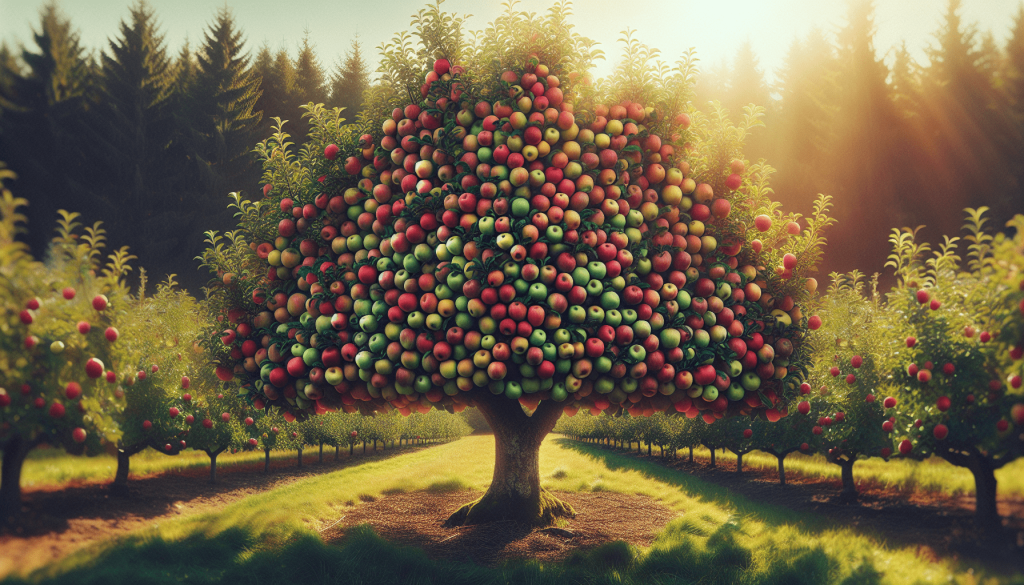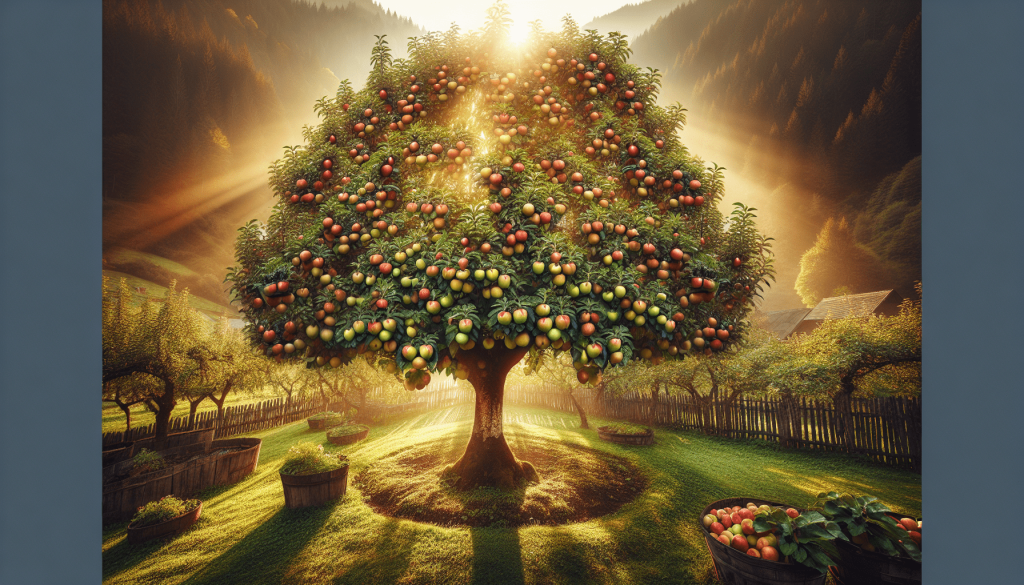This post may contain affiliate links. As an Amazon Associate, we may earn commissions from qualifying purchases.
Have you ever thought about growing heritage fruit trees in your garden? These timeless treasures can provide more than just a connection to the past; they can also offer a range of benefits and can be relatively simple to care for if you know the right steps. Let’s explore the benefits of growing these historic trees and the tips you need to nurture them successfully.
What Are Heritage Fruit Trees?
Heritage fruit trees, often referred to as heirloom fruit trees, are varieties that have been passed down through generations, often over 50 years old, and have remained true to their original genetic makeup. Unlike modern hybrids and genetically modified trees, they offer unique flavors, textures, and appearances that you won’t find in commercially available varieties.
The History of Heritage Fruit Trees
Heritage fruit trees have a storied past. They were often grown for their flavor, resilience, and adaptability to local climates. These varieties have been selected and preserved over centuries by farmers and gardeners who valued their distinctive qualities.
Examples of Heritage Fruit Trees
Some well-known examples of heritage fruit trees include:
| Type of Tree | Heritage Varieties |
|---|---|
| Apple | Cox’s Orange Pippin, Gravenstein, Ashmead’s Kernel |
| Pear | Bartlett, Seckel, Doyenne du Comice |
| Plum | Damson, Green Gage, Mirabelle |
| Cherry | Black Tartarian, Morello, May Duke |
Why Choose Heritage Trees Over Modern Varieties?
Choosing heritage fruit trees means you’re investing in biodiversity and preserving genetic diversity. Modern varieties are often bred for appearance, shelf life, and uniformity, sometimes at the expense of flavor and nutritional value. Heritage trees, on the other hand, can offer superior taste and are often more adaptable to organic and sustainable gardening practices.
Benefits of Growing Heritage Fruit Trees
Growing heritage fruit trees comes with a plethora of benefits that go beyond the aesthetic appeal of your garden. Here are some compelling reasons why you should consider them:
Superior Flavor and Quality
Heritage fruit trees often produce fruits with unique and complex flavors. Unlike some modern varieties designed for resistance to bruising and uniformity, heritage fruits can offer deeper, more varied taste profiles that can make your home-grown fruit truly special.
Genetic Diversity
By growing heritage varieties, you contribute to the preservation of genetic diversity. This diversity is crucial for ecological resilience, helping crops withstand pest outbreaks, diseases, and climate change.
Environmental Benefits
Many heritage fruit trees are naturally resistant to local pests and diseases, requiring fewer chemical treatments. This can make your gardening practices more environmentally friendly and sustainable.
Historical and Cultural Significance
When you plant a heritage fruit tree, you are cultivating a piece of history. These trees offer a direct link to the agricultural practices and culinary tastes of past generations.

How to Choose Heritage Fruit Trees for Your Garden
Selecting the right heritage fruit tree involves considering your local climate, soil type, and available space. Here are some steps to help you choose the best trees for your garden.
Assessing Your Garden’s Conditions
Consider key factors such as:
- Climate: Some fruit trees need a specific number of chill hours (periods of cold weather) to bear fruit properly.
- Soil: A soil test can help you understand if your garden is suitable for the trees you want to plant or if it needs amendments.
- Space: Ensure you have enough room for the mature size of the tree. Some heritage varieties can grow quite large.
Researching Heritage Varieties
Look for heritage fruit trees that are well-suited to your area. Local gardening clubs, agricultural extension services, and heritage seed companies can be great resources.
Compatibility with Modern Gardening Practices
Though heritage trees are often more robust, you will still need to consider how they fit with your overall gardening plans, including other plants and trees in your garden.
Planting Heritage Fruit Trees
Planting heritage fruit trees is an exciting process that requires a bit of planning and effort but rewards you with long-term gains. Follow these steps to ensure successful planting.
Preparation
Before you dig any holes, select a good planting site that receives plenty of sunlight and has well-draining soil. Prepare the soil by adding compost or organic matter if necessary.
Planting Steps
- Dig a Hole: Make sure it’s wide and deep enough for the roots to spread comfortably.
- Place the Tree: Position the tree in the hole, ensuring the root collar (where the root meets the trunk) is level with or slightly above the ground.
- Fill the Hole: Backfill with soil, ensuring there are no air pockets.
- Water Thoroughly: Water the tree thoroughly after planting to help settle the soil around the roots.
Initial Care
After planting, add a layer of mulch around the base to retain moisture and regulate soil temperature. Water the tree regularly, especially during dry periods.

Long-Term Care and Maintenance
While heritage fruit trees are often hardy, they still require ongoing care to thrive. Here’s how to keep your trees healthy for years to come.
Watering
Most fruit trees need deep, infrequent watering rather than frequent, shallow watering. This encourages the roots to grow deeper, making the tree more drought-resistant.
Pruning
Regular pruning helps to shape the tree, remove dead or diseased wood, and improve air circulation. Prune during the dormant season, typically late winter to early spring.
Fertilizing
Feed your trees with a balanced, organic fertilizer tailored to fruit trees. Avoid over-fertilizing, as this can lead to excessive leafy growth at the expense of fruit production.
Pest and Disease Management
Integrated Pest Management (IPM) strategies can be particularly effective. These include promoting beneficial insects, using organic sprays, and practicing good garden sanitation.
Enjoying the Fruits of Your Labor
Once your trees start producing fruit, you can enjoy the delightful flavors that come from your heritage varieties. Here are some tips on harvesting, storing, and using your fruit.
Harvesting
Harvesting times vary depending on the fruit type and variety. Look for signs of ripeness, such as color change and slight softening.
Storing
Different fruits have different storage requirements. Apples, for example, can be stored in a cool, dry place for several months, whereas cherries and plums may need to be used or preserved within a few weeks.
Using Your Harvest
Your heritage fruit can be enjoyed fresh, or you can use them in an array of culinary delights such as pies, jams, and sauces. The unique flavors will surely set your creations apart from anything store-bought.
Challenges and Solutions
Growing heritage fruit trees can come with specific challenges. Being prepared can help you overcome these hurdles effectively.
Common Issues
| Challenge | Solution |
|---|---|
| Pests | Use organic pesticides, promote beneficial insects |
| Diseases | Opt for resistant varieties, practice good hygiene |
| Weather Extremes | Mulch, water deeply, choose climate-suitable trees |
| Poor Soil | Amend with compost, regular fertilization |
Preparing for the Unexpected
Keeping an eye on weather forecasts, inspecting your trees regularly, and being proactive in their care can help you address issues before they become significant problems.
Community and Resources
Connecting with a community can enhance your experience of growing heritage fruit trees. Here are some ways to get involved and where to find helpful resources.
Joining Local Gardening Groups
Join local gardening clubs or online forums where you can share experiences, ask questions, and get tips from more experienced gardeners.
Attending Workshops
Many communities offer workshops on fruit tree care, particularly focusing on pruning, pest management, and organic practices.
Resources
Several organizations and websites specialize in heritage fruit trees. They offer catalogs, planting guides, and care tips to support your gardening journey.
The Future of Heritage Fruit Trees
The future of heritage fruit trees depends on continued interest and cultivation. By planting and caring for these trees, you play a crucial role in preserving them for future generations.
Conservation Efforts
Many botanical gardens and conservation organizations work tirelessly to preserve heritage varieties. Consider supporting these efforts through donations or by participating in seed exchange programs.
Educating Others
Spread the word about the benefits of heritage fruit trees. Educate your family, friends, and community about their importance and how they can make a difference.
Conclusion
Growing heritage fruit trees offers a unique opportunity to savor the flavors of the past while contributing to biodiversity and sustainability. With the right care and attention, you can enjoy delicious, high-quality fruit from your own garden while preserving a piece of horticultural history. Whether you’re a seasoned gardener or a novice, the world of heritage fruit trees is a rewarding and enriching endeavor.








